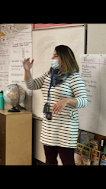Elementary Social Studies Update
The elementary Social Studies team and colleagues around the district have started the first resource pilot for elementary Social Studies. The pilot includes elementary teachers in the areas of monolingual and dual language, special education and English language development, and those trained in using AVID strategies. We are so excited to start this next leg of the journey reviewing potential resources.
This dedicated team of teachers linked here, have been on a several month journey studying the essential shifts in Social Studies referred to in the January leadership blog post, as well as deepening learning around the Social Studies Inquiry Design Model framework we will use K-12 to support our SDW Vision.


The features of the Inquiry Design Model offers a framework for learning with several key features, called dimensions, we have been studying as a K-12 team. The four dimensions are:
1) Developing questions and planning inquiries
The inquiry begins with the development of a compelling question. A good compelling question is the most important element when planning a unit in Social Studies as its purpose is to guide all of the social studies skill development, content acquisition, source analysis and argument skill. Features of the compelling question are: it is content based, contains a useful tension still disputed in social studies and students lives, is arguable from multiple perspectives. It is key that this question be debatable, as our learners job is to analyze sources that help them to contextualize and corroborate their information as demonstrated by the summative performance assessment proving their claim with informed evidence and reasons. Tool Question Type Page 1,
Example: Do people around the world care about children's rights? (Debatable, right?)
Summative: Students will write a reasoned essay that includes three sources of evidence answering the compelling question.
Argument stems: People around the world care about children's rights. People around the world do not care enough about children's rights. Under specific circumstances, people around the world sometimes care and do not care about children's rights.
2) Applying Disciplinary Tools and Concepts
Based upon the compelling question and the summative assessment of that question, students will be lead to and or shared several supporting questions that help them into and through a focused inquiry. For each supporting question, students will experience tasks that require them to learn and apply the skills they will need in preparation for their summative. Tool Question Type Pages 2-3
Supporting Questions and Tasks:
1) What are children's rights? Task: Shared Reading We Are All Born Free by Amnesty International
2) Which are the rights most often violated? Task: Evaluating a World Map of School Access children ages 6-15.
3)Which organizations support children's rights, and how? Task: Compare and contrast child serving organizations, where they serve and which services they provide
4) How are major child serving organizations funded? Task: Evaluate an infographic of non-profit funding sources
3) Evaluating Sources and using evidence
Sources are the content in the Social Studies classroom. This is a shift from current practice where the teachers own background knowledge may have provided the source. Teachers will instead be carefully determining sources that help students to build the body of evidence they will need for their arguments. Sourcing, or the ability to read a source in it's context, of through the lens of an economist or political scientist, to draw evidence and conclusion is key to the inquiry. In our pilot, teachers are using the instructional resource for the sources: texts, maps, paintings, graphs and tables, stories, newspaper ads, photographs etc. Resources: Document Sourcing ,Visual Sourcing
Sources include:
1) We Are All Born Free by Amnesty International
2) World Map of School Access children ages 6-15.
3) List of child serving international organizations, where they serve and which services they provide
4) Infographic of non-profit funding sources
4) Communicating and critiquing conclusions and taking informed action
Finally, and most importantly, Social Studies education should result in students ability to have more than an opinion, but an evidence based argument. An informed citizenry who not only learns information, but has and shares an informed opinion about that information is what social studies is, all about! Our students will develop an argument for or against the compelling question, in essence, and develop a written, spoken or representation of their conclusions. The classroom will transform into a place where there can and should be multiple conclusions based on the evidence. Students will be facilitated then take informed action to address the local issues related to the compelling question.
Summative: Students will write a reasoned essay that includes three sources of evidence answering the compelling question.
Extension/Taking Action: Make a list of local issues impacting children's rights, and create a public service announcement

Our first resource pilot will be wrapping up in March. At that time we will be considering how to move forward with our planning. There will be another Connect Posting in March, or join us by viewing the Teaching and Learning Committee meeting on March 2 and April 6 at 6pm. If you'd like to initiate learning about the Inquiry Design Model, we invite you to start on your own path by watching these web recordings, and exploring the links in this post:
Introduction to the Inquiry Design Model Link Content, Compelling Questions and Summative Learning Tasks Link Filling the Inquiry with Supporting Questions and Tasks Link



